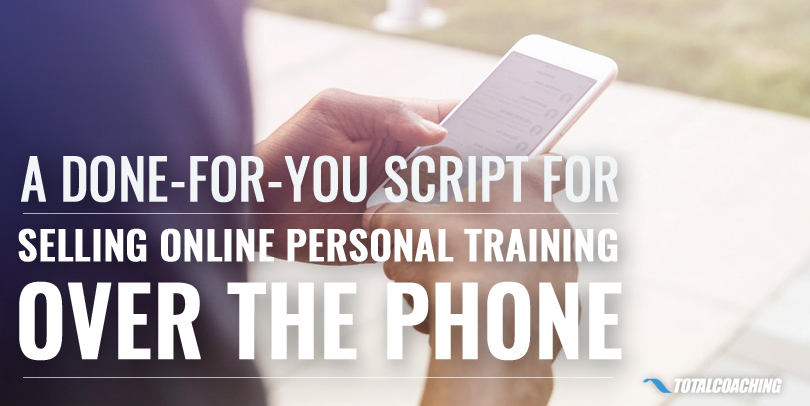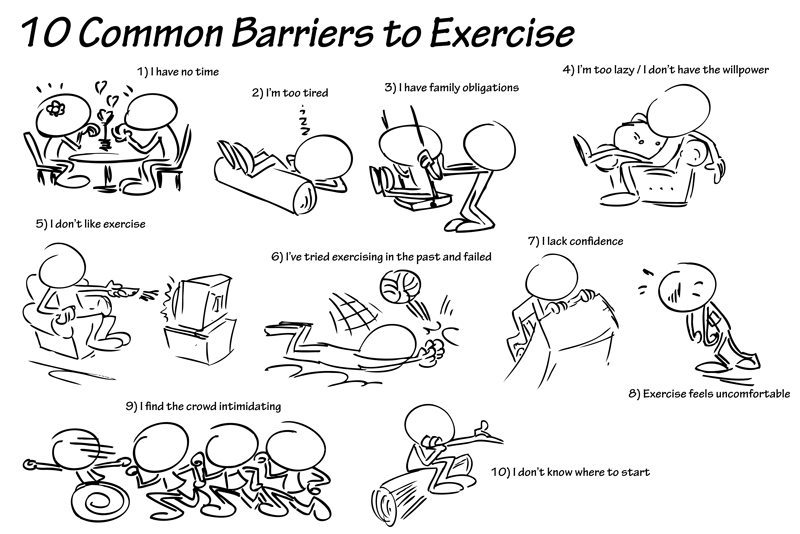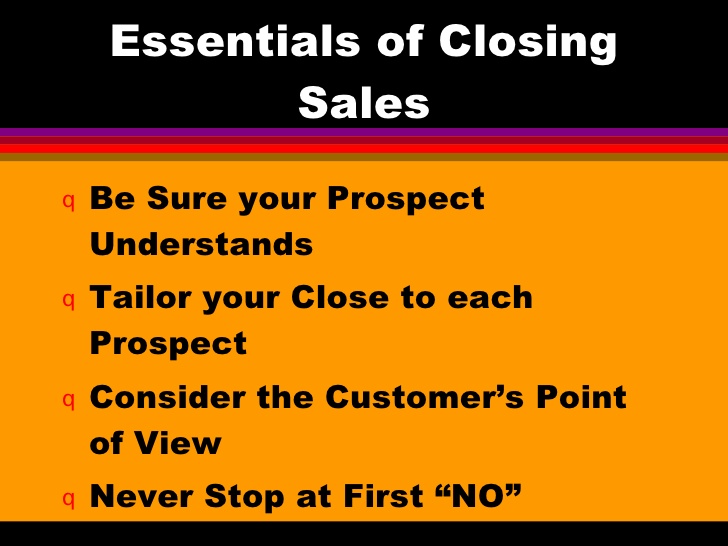So you’ve set up your online training business and you’re ready to start engaging more prospective clients and making some sales. One of the most useful tools you can learn is how to conduct sales over the phone.

Imagine you’ve started chatting with a prospect via Facebook and they seem interested in your services. It's your job to parlay their interest into an actual purchase.
This is sometimes harder than it sounds.
Lots of people say they want certain things (e.g. “I want to lose weight so badly!”), but when it comes time to sign on the dotted line and make a payment, their interest seems to take a dive.
A great way to strike while their interest is piqued is to set up a sales call or a sales meeting over the phone. This gives your prospects the opportunity to learn more about your training programs and for you to close the sale and secure that new client.
The trick to closing the sale is mastering the art of selling over the phone. This isn’t a skill that comes naturally to everyone, but here’s a step-by-step, done-for-you script on how to perfect your sales pitch on the phone.
Do You Really Need a Script to Sell Online Personal Training?
Before we dive into the details of your sales pitch, here's a great video explaining why you NEED a sales script (even if you think you don't):
A Done-For-You Script for Selling Online Personal Training
There are 6 crucial stages for an effective sales call. Use the scripts below to sell online personal training over the phone:
1. The Opener
It’s important to start your call by grabbing your clients’ attention right away. Take a minute or two to make small talk and get your prospective client to feel more comfortable talking openly with you. You can try something like this:
"Hi (client’s name). It’s (your name). Thanks for taking the time out for this call. How’s your (day of the week) going?"
I know that sounds simple, but it's just the start. It's likely that your prospect will respond with something like, "It's going okay."
Don't stop there. Ask a follow-up question. What have they been working on today? What plans do they have for the rest of the week? What are they looking forward to right now?
Your goal is to make a connection so that they feel safe openly sharing with you throughout the rest of the conversation.
2. Steering The Conversation
Always allow your prospect enough time to respond to your questions. You don’t want them to feel rushed into a sale. Rather, you want them to feel engaged in a genuine conversation with someone who cares about what they are saying.
At the same time, it’s your job as the seller to take control of the call and steer the conversation towards your end goal.

It's your responsibility to set expectations for the call right from the start
You can do this by explaining the purpose of the call to your clients so they know what to expect:
"I’d like to start by getting some more information about your history and your exercise goals. From here, we can talk about my online training programs and can figure out which one would be the best fit for you. Does that work for you?"
Think carefully about your questions, and lead your prospective clients toward “Yes” answers. Getting your clients in the habit of answering “Yes” will increase your chances of closing the sale.
3. Gathering Information
Before you launch into how amazing your training programs are, take the time to gather as much information as you might need from the prospect.
Nobody wants to feel like a salesperson is only interested in making the sale, and not in their specific needs.
Plus, the information you gather now will help you authentically suggest one of your programs to them. It will also help you foresee some of the hurdles your prospect might stumble on before agreeing to work with you.
Some useful information-gathering questions include:
"What’s your current exercise routine look like? Have you ever followed a specific workout program before?"
"Have you ever worked with a coach or online trainer before? If so, what did you like about working with a trainer? Is there anything you didn’t like about working with your trainer?"
"Do you have any health issues or injuries that might affect your exercise routine?"
"What are your major exercise goals? Are you looking to lose fat/gain muscle/build stamina, etc.?"
"Where would you like to see (this goal) in 3 months? In 6 months?"
Don’t just record the answers to these questions without thought. For some questions, you may need to probe deeper to get a better understanding of what the client wants.
Remember, the more information you have, the better you’ll be able to design a training program that they will be interested in.
4. Jumping the Hurdles
Now that you've built rapport with your prospect and have guided the conversation through some important information-gathering steps, it might seem like selling your online personal training services is a done deal.
Hold on...
Inevitably, there will be something holding your client back from signing up right then and there. Let’s call these objections “hurdles,” because they stand in the way of your client agreeing to the sale.
Your next job is to identify every hurdle, and then help your client “jump” over them by offering solutions. Here's a simple question to get the hurdle conversation started:
"All this sounds pretty great! But I’m sure you have some reservations. What do you think might be holding you back from your fitness goals?"
Give your clients enough time to think of all the hurdles that they see in their way. Be sure to ask them if there is anything else they can think of, so you’re able to write down all the hurdles you’ll have to jump.
Here are some of the most common examples you'll likely encounter:

Prepare solutions for the most common barriers ("hurdles") to exercise
Once they’ve finished you can ask:
"If I were able to offer you a training program that could overcome everything that’s holding you back, do you think you’d be interested in signing up?"
Chances are, the answer will be “yes”, and you can finally move to your pitch.
5. The Sales Pitch
Introduce your program by focusing on the areas of interest that your client has already mentioned. You want them to feel like you’re offering them a one-of-a-kind personalized programmed tailored to their needs.
You want to give as much information as possible, while being as specific to that client as you can. Here's an example:
"Awesome! My program is called (name of programme) and it has (number) parts, all suited to you.
You mentioned that you’re looking to lose 10lbs of fat in the next 3 months, but you work a lot so you rarely have time to make it to the gym. What I can do is set up a series of 30-minute home workouts that you can easily include in your daily routine, and a training programme that will only require you spending an hour per week in the gym.
Does that sound good to you?"
Be clear with your prospects about the services you’re offering and how you will directly address the needs that they have already explained to you. This is where you tell them how you will jump every hurdle that they brought up.
6. Closing The Sale
Once you’ve offered your prospect a program that obviously meets their specific needs, it’s time to talk price. This is usually the most difficult part of the call, but just be as clear as possible.
"I’m so happy you’re interested. It looks like we can definitely make this work! The (name of program) costs (monthly/weekly cost), and that includes (the parts of the program you already explained).
Before you get started, I usually ask for a (1-3 month) commitment to ensure you get the most out of the experience. If you sign up today, we can get started by (date). So are you ready to do this?"
Allow your customer as much time as possible to think about your offer. Just be quiet and wait. Don’t try to talk them into a sale too quickly - often they will think out loud before talking themselves into the sale.

IMPORTANT: Make sure you have your payment information on hand so you can send to them as soon as they say “Yes.” Be clear about how that payment method will work, when they will receive it, and when you'll expect to receive notification that the payment has successfully been made. In other words, set clear payment expectations.
If your prospect objects to the price, don’t lose hope. Instead, try to work together to find a solution:
"I understand your concerns but I’d really love to work with you, so I don’t mind being flexible on payments. What if we work out a payment plan for the first 3 months? Would you prefer if the payments were split into smaller increments?"
Be reasonable and understanding of your client’s concerns. Usually with a little discussion you can come up with an arrangement that you both agree upon. You can also offer them a cheaper program (a.k.a. a downsell) if that’s available.
If you still can’t come to an agreement, or your client simply can’t afford your services, be gracious and end the call. Make sure you leave your contact information in case they are interested at another time when they can afford you.
Useful Tips to Remember
- Silence is golden. Your prospectwill be less interested if they feel like you’re trying to pressure them into a sale, so do not talk over them. You don’t need to fill every second on the call. Give your prospective client time to think about your offer, and also give yourself time to think before responding.
- Make notes. Writing down your prospect’s goals and hurdles during the call will help you remember to address everything when explaining your program to them. This way you can check off as you go along so you don’t miss anything they said.
- Set a follow-up time. Whether it’s another phone call, their first training session, or an introductory conversation, agreeing to a follow-up time will demonstrate your commitment to your prospective client.
Recap
Once you practice the simple script outline provided here, you'll be well on your way to selling your online personal training services with ease. Remember:
- Have a good opener.
- Take control of the direction of the conversation by setting expectations.
- Gather information about your prospective client's needs and wants.
- Identify hurdles and jump over them with solutions.
- Pitch a program that meets the needs your prospect has identified.
- Agree on a price and close the sale.




